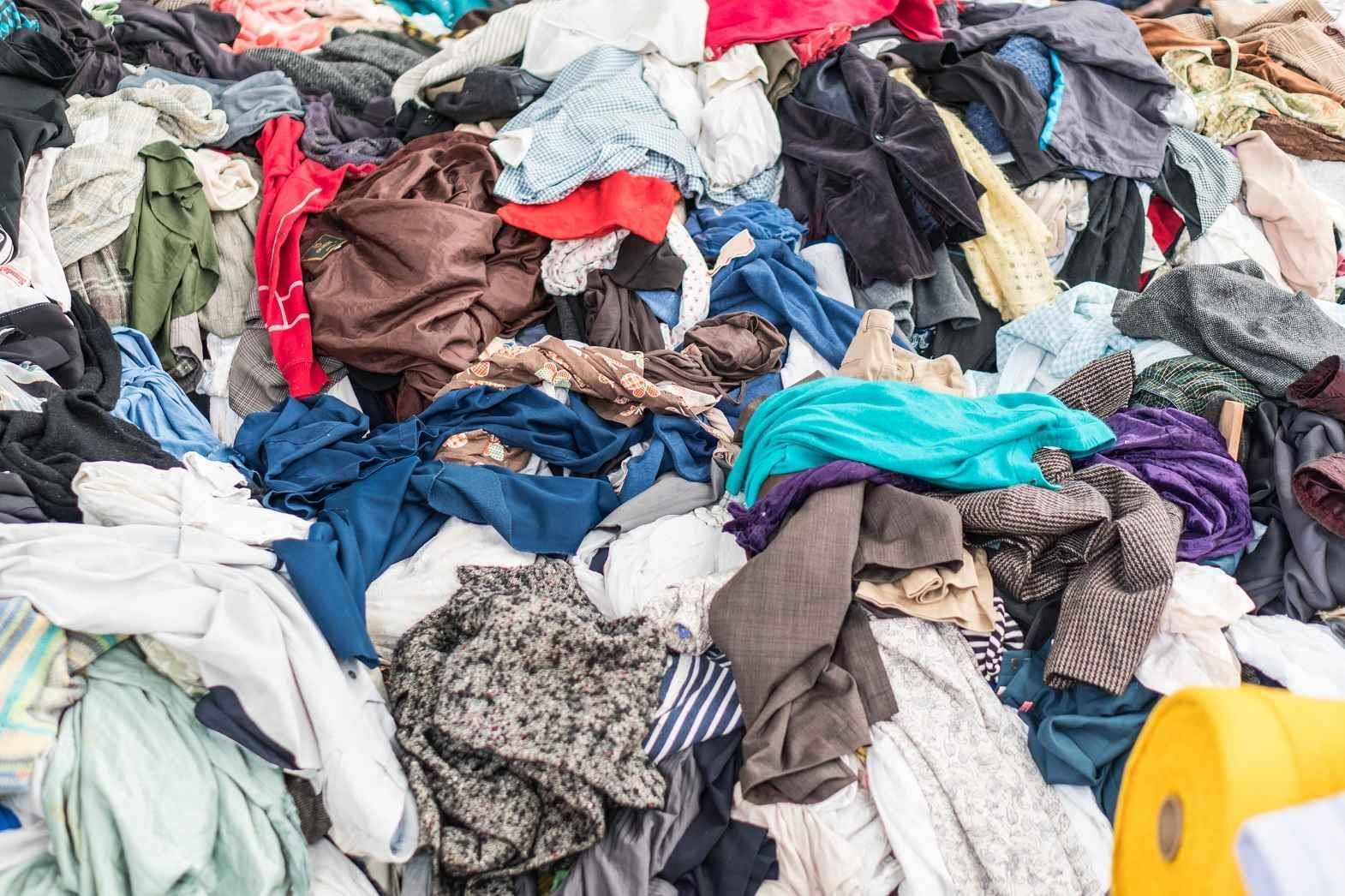Today’s vibrant world of fashion and trendy garments masks an underlying issue of fabric waste. The ever-expanding global textile market churns out mountains of unused fabric scraps and flawed patterns every day. This long-standing problem is not merely an aesthetic concern; it has significant repercussions on both our daily lives and the environment. Annually, the garment industry generates an astounding volume of fabric waste, which has detrimental effects on the planet and our life cycle. However, through innovative solutions, this crisis can be transformed into a cleaner, more sustainable model. This article explores intelligent strategies for reducing fabric waste in the garment industry, including ethical practices, groundbreaking ideas, and success stories.
The textile and apparel sector is a cornerstone of the global economy, providing employment and fuelling economic growth. Despite these benefits, the industry often bears the label of being one of the most environmentally damaging. Textile manufacturers are both producers and consumers of fabrics, leading to considerable waste. To combat this, various companies in the sector have put into place measures and action plans aimed at minimising their environmental footprint. This article will delve into key strategies such as recycling, repurposing, and reusing materials.
Wastage in the Garment Industry
In the garment industry, the cutting process is a notorious source of significant pre-consumer fabric waste. Such waste mainly arises from inefficient cutting methods, low marker efficiency, and suboptimal fabric usage. However, the implementation of standardised cutting procedures and the adoption of computer-aided design (CAD) technologies can substantially streamline the cutting process, thereby reducing the amount of waste produced.
Waste in the textile and garment sectors can be broadly divided into two main categories: pre-consumer and post-consumer waste. Pre-consumer waste is generated during the manufacturing process on the factory floor. This type of waste includes fabric selvages, leftover fabric scraps, as well as sewing and finishing waste like damaged garments and defective items. On the flip side, post-consumer waste consists of textile items that have been used and subsequently discarded, such as worn clothing, bedsheets, towels, upholstery, carpets, and rugs.
Fortunately, technological advancements are providing new avenues to tackle this issue. Various companies, such as FabScrap, have emerged to collect fabric waste directly from manufacturers. This collected waste is then sold to designers and quilters, thereby facilitating the creation of more efficient fabric sourcing systems. This initiative is especially advantageous for smaller designers who frequently work on diverse projects and experiment with reduced fabric consumption. By contributing to this waste-reducing cycle, such initiatives not only promote sustainability but also provide a viable economic model for waste management in the textile industry1.
Wastage Area in the Textile and Apparel Industry
In the textile and apparel manufacturing industry, various areas and points have been identified as major sources of fabric wastage. The following explanation outlines these areas where efforts can be made to reduce fabric wastage2.
• Fabric manufacturing techniques and processes
• Wet processing and techniques
• Fabric wastage in the cutting department
• Fabric wastage in the sewing department
• Special operations and finishing department
• Accessories department
• Material handling and issues
Let’s discuss these areas one by one.
• Fabric manufacturing techniques and processes
Different methods are employed to manufacture various types of fabrics and their derivatives in the textile industry. However, two traditional and primary methods stand out: weaving and knitting. In terms of waste generation, these processes give rise to different types of waste stages. In knitting, a variety of waste issues can be identified. These encompass leftover yarn on cones, yarn residues in the knitting machine tubes, fabric defects, challenges in producing fabric rolls, and other waste that is unrelated to textiles. In weaving, similar waste categories exist. These are generated during processes like warping, sizing, weft winding, and weaving. The waste types in weaving mirror those in knitting and encompass problems related to yarn during warping, remnants of yarn on cones, complications during weaving, fabric roll production, and other forms of waste that are not linked to textiles.
• Wet processing and techniques
The wet processing of fabric is one the most important and considered preparatory of fabric manufacturing. This process includes sub-processes like:
• De-sizing of fabric
• Fabric scouring
• Bleaching of fabric
• Mercerisation process
• Heat setting of fabric
• Fabric dyeing
• Fabric printing
• Finishing of the fabric
• Heat setting and other
In the textile industry, wet processing techniques also contribute to substantial fabric wastage. These losses can arise from a variety of factors, including lead cloth wastage, joints in fabric ends, and waste generated from testing samples. Additionally, non-rectifiable defects like holes, stains, oil marks, patches, and lot markings add to the overall wastage. Such defects are often the result of poor inventory management during the wet processing stages.
It is crucial to differentiate between fabric wastage and fabric properties that may lead to a reduction in available material but are not technically ‘waste’. For example, fabric shrinkage during wet processing is a significant factor that contributes to overall fabric shortage. However, shrinkage is not considered wastage per se; rather, it is an inherent property of the fabric that needs to be managed effectively to minimise its impact on material shortages.
Therefore, understanding and managing these complexities are vital for reducing waste and promoting sustainability in the textile and garment industries. Effective inventory management, quality control, and process optimisation are among the strategies that can mitigate these types of wastage, ultimately leading to more sustainable practices within the industry.
• Fabric wastage in the cutting department
One of the most critical stages in apparel production planning, especially in terms of fabric wastage, is the cutting process. This stage is where a significant percentage of fabric wastage occurs. However, the overall percentage of fabric wastage during cutting depends on several factors, including marker efficiency, marker planning, the garment’s style, and the fabric’s weave. In the apparel and textile industry, marker efficiency plays a pivotal role. It is defined as the ratio of the total area covered by the patterns to the total area of available fabric and is typically expressed as a percentage. A marker efficiency value exceeding 85 per cent is considered highly efficient, leading to cutting wastage of less than 10-15 per cent.
For instance, if a plain fabric achieves an 89 per cent marker efficiency, it results in 11 per cent fabric waste. This waste can be attributed to various factors, including excessive lay length and width, poor alignment, excess overlapping or tailing, subpar cutting techniques, and the need for improved cutting methods. Cutting wastage can also increase during bundling and sorting cut panels, particularly when dealing with fused or frayed edges, or when cutting standards are of poor quality. By focusing on cutting standards and addressing the factors that affect fabric cutting, it is possible to maximise fabric utilisation and reduce wastage.
• Fabric wastage in the sewing department
In the apparel industry, wastage on the sewing floor primarily stems from sewing defects. This results in the production of defective pieces that fail to meet the required customer standards. These defects encompass issues with stitches, problems with seams, assembly errors, difficulties in ironing, and subpar workmanship. This type of wastage is commonly known as ‘rejection’. By addressing these problems, we can effectively reduce sewing defects and, in turn, minimise fabric waste generation. Reusing or reutilising fabric waste can lead to cost savings across various stages of apparel manufacturing.
• Special Operations and finishing department
In the clothing industry, when crafting garments, customers frequently request special tasks such as embroidery, specific work sequences, the creation of smocking patterns, the application of unique garment washing techniques, and the addition of distinctive finishing touches. However, in the process of performing these operations, a certain percentage of fabric damage occurs, resulting in fabric wastage.
• Accessories department
In clothing manufacturing, the use of various trims and accessories is essential, and these are typically categorised into two groups: production accessories and packing accessories. Production accessories are those used on the production floor during the sewing and finishing of garments. These items include the main label, wash care label, sequences and decorative appliques, buttons and zippers, stickers, and even the cardboard boxes used for packaging. Poor inventory management and improper handling of these accessories and items can result in increased wastage. In some cases, special accessories may be imported from foreign countries due to their unavailability in the local market. Additionally, defects and wastage during the garment manufacturing process can pose challenges for manufacturers.
• Material Handling issues
As previously mentioned, the extent of material handling in various departments of the garment industry significantly affects the volume of waste generated. Material handling encompasses not only primary raw materials but also a variety of materials utilised in specific manufacturing processes across different sections within garment factories.
For instance, when managing dyes, paints, and chemicals during the wet processing stage, inadequate material handling can result in costly dyes and chemicals seeping or spilling onto the fabric. This can lead to substantial financial losses and a detrimental impact on the final product’s quality. Utilising traditional machinery and equipment may improve fabric material handling without compromising fabric quality. Therefore, implementing effective and efficient material handling standards and contemporary techniques will significantly reduce wastage costs and fabric damage, ultimately reducing fabric wastage.
Benefits of Fabric Waste Reduction
1. Environmental Preservation: Reducing fabric waste primarily helps conserve natural resources, significantly lessens pollution, and minimises the environmental impact of the fashion industry.
2. Cost Savings: Waste reduction in apparel manufacturing leads to lower production costs, increased efficiency, improved profitability, and overall cost savings.
3. Resource Efficiency: Efficient use of fabric materials minimises waste, ensuring the wise and sustainable use of resources.
4. Innovation Opportunities: A focus on waste reduction encourages manufacturers to innovate in their production processes, resulting in creative and eco-friendly solutions.
5. Ethical Practices: Promoting waste reduction aligns with ethical manufacturing practices.
6. Improved Product Quality: Reducing fabric waste can enhance quality control and assurance, resulting in fewer defects in apparel products.
7. Long-term Sustainability: Ultimately, waste reduction efforts contribute to the long-term sustainability and resilience of organisations.
Conclusion
The issue of fabric waste in the textile and garment industry is a monumental challenge with far-reaching implications for both the environment and society at large. Despite being a significant contributor to the global economy, the sector faces scrutiny for its environmental impact, including high levels of waste. Nevertheless, the industry is not without solutions. As explored in this article, multiple facets of the textile and garment supply chain, from the manufacturing floor to post-consumer stages, offer avenues for waste reduction and sustainable innovation.
Moreover, addressing the waste issue goes beyond mere environmental stewardship. It impacts the industry’s economic efficiency, paving the way for cost savings, improved product quality, and long-term sustainability. By mitigating waste, companies can adopt ethical practices that not only resonate with increasingly eco-conscious consumers but also align with broader sustainable development goals.
Therefore, it is imperative for stakeholders across the textile and apparel sectors to collaborate in tackling the fabric waste challenge. The payoffs are manifold: reduced environmental degradation, enhanced ethical manufacturing, increased economic viability, and the elevation of the industry’s contribution to global sustainability efforts. In this respect, the onus falls on everyone, from policymakers to manufacturers and consumers, to foster a more sustainable and waste-efficient fashion world. Through concerted efforts, innovation, and a commitment to ethical practices, the industry can transition from being part of the problem to being an integral part of the solution, thereby achieving a greener and more sustainable future for all.









Comments